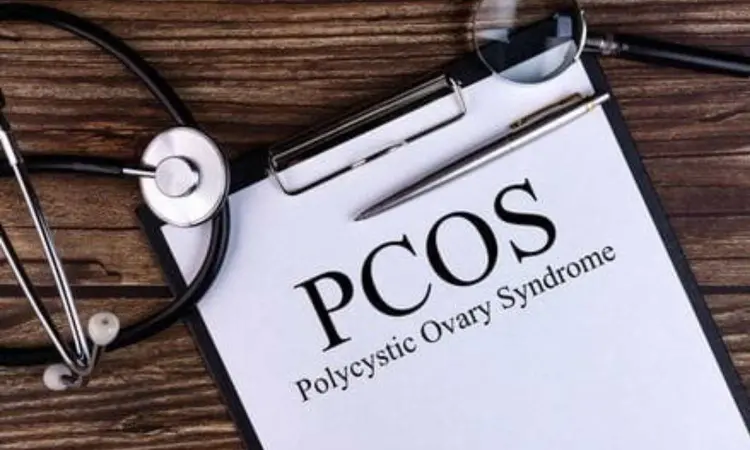- Home
- Medical news & Guidelines
- Anesthesiology
- Cardiology and CTVS
- Critical Care
- Dentistry
- Dermatology
- Diabetes and Endocrinology
- ENT
- Gastroenterology
- Medicine
- Nephrology
- Neurology
- Obstretics-Gynaecology
- Oncology
- Ophthalmology
- Orthopaedics
- Pediatrics-Neonatology
- Psychiatry
- Pulmonology
- Radiology
- Surgery
- Urology
- Laboratory Medicine
- Diet
- Nursing
- Paramedical
- Physiotherapy
- Health news
- Fact Check
- Bone Health Fact Check
- Brain Health Fact Check
- Cancer Related Fact Check
- Child Care Fact Check
- Dental and oral health fact check
- Diabetes and metabolic health fact check
- Diet and Nutrition Fact Check
- Eye and ENT Care Fact Check
- Fitness fact check
- Gut health fact check
- Heart health fact check
- Kidney health fact check
- Medical education fact check
- Men's health fact check
- Respiratory fact check
- Skin and hair care fact check
- Vaccine and Immunization fact check
- Women's health fact check
- AYUSH
- State News
- Andaman and Nicobar Islands
- Andhra Pradesh
- Arunachal Pradesh
- Assam
- Bihar
- Chandigarh
- Chattisgarh
- Dadra and Nagar Haveli
- Daman and Diu
- Delhi
- Goa
- Gujarat
- Haryana
- Himachal Pradesh
- Jammu & Kashmir
- Jharkhand
- Karnataka
- Kerala
- Ladakh
- Lakshadweep
- Madhya Pradesh
- Maharashtra
- Manipur
- Meghalaya
- Mizoram
- Nagaland
- Odisha
- Puducherry
- Punjab
- Rajasthan
- Sikkim
- Tamil Nadu
- Telangana
- Tripura
- Uttar Pradesh
- Uttrakhand
- West Bengal
- Medical Education
- Industry
Women with PCOS have Lower Parity and deliver children later finds study

Researchers have found that women with polycystic ovary syndrome (PCOS) attain lower parity and have a higher odds of having the baby after advanced maternal age than women without PCOS. The relationship is also linked to greater risks of complications in pregnancy, including gestational diabetes. A recent study was conducted by Dr. Maria and colleagues and was published in the American Journal of Obstetrics and Gynecology.
PCOS is one of the most common endocrine disorders affecting women of reproductive age. Many implications of the disorder are already well-documented regarding fertility and early reproductive years, but little is known about reproductive outcomes at the end of the reproductive lifespan in women with PCOS. Thus, the purpose of the study was to fill this gap by comparing maternal age, parity, and pregnancy-related complications between women with and without PCOS.
This analysis utilized the Australian Longitudinal Study on Women's Health, a prospective population-based cohort followed up every three years from 1996 to 2021. The women were aged 18 to 23 years at the commencement of the study and followed up until they turned 43 to 48 years of age. PCOS diagnoses were assessed based on self-report.
Women with PCOS: n=981 (9.9%)
Women without PCOS: n=13,266
The researchers analyzed reproductive outcomes, such as parity, maternal age at childbirth, and pregnancy complications.
Key Findings
Parity and Nulliparity:
• Women with PCOS had fewer births than women without PCOS (1.7 ± 1.3 vs. 1.9 ± 1.2; p<0.001).
• The nulliparity rate was higher for women in the PCOS group (23% vs. 18%; p=0.003).
Maternal Age:
• The first birth occurred among women with PCOS at a higher maternal age compared to women without PCOS (29.5 ± 5.5 vs. 28.8 ± 5.5 years; p<0.001).
• Age at second birth was also higher (32.1 ± 5.2 vs. 31.1 ± 5.0 years; p<0.001).
Odds of Advanced Maternal Age:
• PCOS increased the odds of advanced maternal age at first birth by 40% (aOR: 1.40; 95% CI: 1.10–1.80).
• Late PCOS diagnosis nearly doubled the odds of advanced maternal age (aOR: 1.98; 95% CI: 1.22–3.22).
Pregnancy Complications:
• The results revealed that PCOS is associated with a higher risk of gestational diabetes (aOR: 3.90; 95% CI: 2.99–5.10).
• For type 2 diabetes, no association was found (aOR: 0.81; 95% CI: 0.43–1.50) nor for hypertension (aOR: 0.78; 95% CI: 0.59–1.03).
In comparison to the average population of women, those affected with PCOS encounter lower parity, delayed childbearing, and greater complications associated with bearing. Early diagnosis and targeted interventions are considered as crucial in managing such difficulties, particularly those concerning the risks associated with advanced maternal age. Those presenting with PCOS require ongoing monitoring and tailored reproductive care.
Reference:
Forslund, M., Teede, H., Melin, J., Tay, C. T., Loxton, D., & Joham, A. E. (2024). Fertility and age at childbirth in Polycystic Ovary Syndrome: Results from a longitudinal population-based cohort study. American Journal of Obstetrics and Gynecology. https://doi.org/10.1016/j.ajog.2024.11.010
Dr Riya Dave has completed dentistry from Gujarat University in 2022. She is a dentist and accomplished medical and scientific writer known for her commitment to bridging the gap between clinical expertise and accessible healthcare information. She has been actively involved in writing blogs related to health and wellness.
Dr Kamal Kant Kohli-MBBS, DTCD- a chest specialist with more than 30 years of practice and a flair for writing clinical articles, Dr Kamal Kant Kohli joined Medical Dialogues as a Chief Editor of Medical News. Besides writing articles, as an editor, he proofreads and verifies all the medical content published on Medical Dialogues including those coming from journals, studies,medical conferences,guidelines etc. Email: drkohli@medicaldialogues.in. Contact no. 011-43720751


